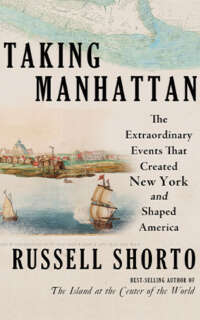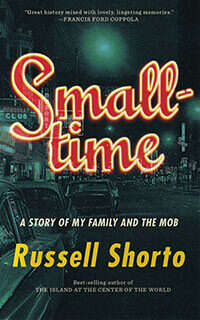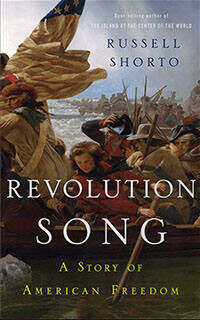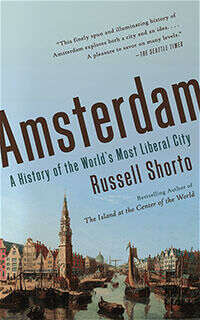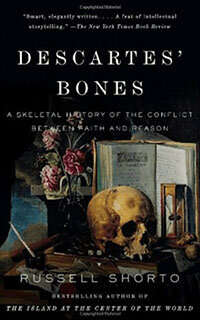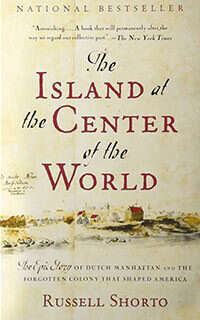The Industry Standard
by Russell Shorto
October 03, 2004
A story about music could do worse than to begin at Carnegie Hall. We’re here for a little night music — or rather, more than a little. The plan is to see three performers this evening, and the complication that two of them will be appearing on different stages at the same time only adds the spice of challenge. We reach our seats in Zankel Hall, a newly built, smallish, ultramodern performance space, just as Audra McDonald takes the stage. She’s a singer who moves easily between musicals and serious classical soprano roles, and tonight she’s in a slinky black gown, accompanied by a six-piece band, to perform ”The Seven Deadly Sins,” a set of Broadway-style songs, each one written by a different prominent composer-lyricist team. The music is witty, sultry and poised, with McDonald seated on a stool torch-singer-style, chatting and joking between songs with her no-less-elegantly attired audience. We stay for the first five sins, then duck out after Sloth and vault up the staircase to find that the stately and storied main hall has come undone, 2,800 people rocking, conga lines going up and down the aisles. David Byrne is onstage, backed by a rock band and a full string section. The former Talking Heads singer and longtime impresario of eclectic pop is dressed all in brown with white shoes, and the music moves from Talking Heads’ nervous anthem ”Psycho Killer” to an aria from ”La Traviata” that he introduces by saying, ”This is a song by an Italian songwriter, Giuseppe Verdi.”
Once again we have to duck out before the set ends. On 57th Street, we pile into taxis and head downtown to experience music in what, for some of us anyway, is a more familiar context: surrounded by black matte walls, in a sweaty club, with the crowd standing body to body, heads bobbing in unison. The show, at Irving Plaza, is a highly anticipated performance by Wilco, the sometimes-tortured rock band that has gotten as much press coverage of its emotional and artistic struggles as of its records. The music is arty and pounding and complicated and distorted. The average age of the audience is probably 20 years younger than McDonald’s but 20 years older than the music industry’s target teen demographic.
Which brings us to the point of our story. What these disparate artists have in common is a record label. I’m spending the evening with the staff of Nonesuch Records, the tiny, vigorously eclectic label, housed on the 24th floor of a high rise on the Avenue of the Americas in Manhattan, that has become a kind of American cultural institution. It has an influence far out of proportion to its size, and some think it could be a guidepost for a record industry in desperate need of direction.
One secret to the label’s success is the conviction that the distance between Carnegie Hall and Irving Plaza has shrunk; that, in an age of category blurring, the fault lines in the audience are not between genres like classical, rock and hip-hop, but between sensibilities; that a person might, depending on his or her mood, put on a Beethoven symphony, a compilation of Cuban jazz, some urban rock or a country chanteuse like K. D. Lang. A crucial fact about that someone is that he or she is likely to be over the age of 30. Two further facts flow from this, which Nonesuch exploits: this listener has money to spend on CD’s, and he or she would rather have the packaged product than snag a few songs off the Internet.
”Nonesuch is piracy-proof,” the singer Emmylou Harris — who became the label’s first ”adult pop” signing four years ago — said when I asked her to list the things that set her label apart. ”Their audience actually enjoys buying a record. When I got into music in my teens, the album was a thing in itself. It was a whole piece of work that had a reason to flow the way it did. You weren’t interested in just one or two songs. Nonesuch is still in the business of supporting album artists.”
The industry as a whole is famously obsessed with youth and megahits. It’s also famously slumping. Between 1997 and 2003, the total number of units sold (CD’s, cassettes, vinyl, etc.) dropped by 25 percent, according to the Recording Industry Association of America. Critics have charged the R.I.A.A., a lobbying group for record companies, with manipulating numbers in order to bolster its case against music downloading; anyway you look at it, however, the situation hasn’t been pretty. Even the recent, seemingly surefire tactic by Universal Music Group, the biggest of the big companies, to slash its wholesale CD prices by 30 percent, failed to spur business.
Against this backdrop of gloom, Nonesuch stands in trim statistical relief. Where the big labels often need a record to hit upward of one million in sales in order to turn a profit, Nonesuch operates on a different scale and by a different logic. It has its blockbuster hits — ”Buena Vista Social Club,” from 1997, is the label’s all-time best seller, with three million records sold — but it can also do nicely with sales of 100,000, or even 50,000. Of the Warner Music Group’s 4,400 employees, a grand total of 12 make up the entire staff of Nonesuch, which is a part of WMG’s Warner Brothers division. In the past 20 years, Nonesuch’s annual sales have grown from $750,000 to a reported $35 million. Profits have grown while the industry has contracted, and 2004 looks to be its best year yet.
Where it was once seen as a niche classical label, now eminently innovative musicians of every stripe — including those of a certain age, whose stardom has dimmed somewhat but who still have large followings — want to come aboard. David Byrne and K.D. Lang have their first records on the label this year, and last month it released Brian Wilson’s ”Smile,” the record Wilson began in 1966 with the Beach Boys and left unfinished until recently. When Nonesuch’s parent corporation folded its Warner Jazz label recently and told its artists they would be divided among the other divisions in the company, all those that Nonesuch spoke with said they wanted to come to the label. (The label has so far picked up three, including the guitarist Pat Metheny.) Nonesuch has achieved such cachet that Carnegie Hall itself wants some of it to rub off: in 2003 the two entities inaugurated the Nonesuch at Carnegie series, giving the label’s artists the prestige of performing at the venue and Carnegie a dose of eclectic hipness. In January, NPR began broadcasting some of the concerts.
It’s customary for musicians to gripe about their labels, yet it’s hard to locate a Nonesuch artist with complaints. And the musicians’ contentment and the label’s profitability and critical acclaim have a common root. ”It’s a complete oasis in the recording business today,” said the New Music composer Steve Reich, who has been on Nonesuch for 20 years. ”It is run honestly and candidly and on a very simple principle: If Bob likes it, he records it.”
Bob is Robert Hurwitz, and it would be an exaggeration, but not too great a one, to say that Nonesuch is Hurwitz. In a business now largely run by accountants and M.B.A.’s, Hurwitz is, in the words of Stephen Sondheim, who has made four records with Nonesuch, ”one of the few left who practice the making of records as a craft.” Ara Guzelimian, Carnegie Hall’s artistic adviser, refers to Hurwitz as ”the man who knows what I’m going to like next.” The distinguished classical composer John Adams, who is perhaps best known for his opera ”Nixon in China,” compares Hurwitz with ”the great book editors, like Maxwell Perkins.”
Hurwitz is 55 and has the unshakable calm and sweet-but-remote smile of a Zen master. He favors open-collar shirts and wears his hair an inch or so over the collar. He grew up in Los Angeles in what he describes as ”a fairly evolved household as far as music was concerned,” with piano lessons from age 7 and parents who sang Cole Porter and Gershwin tunes after work and prowled L.A. nightclubs to hear the jazz pianist Art Tatum ”probably a hundred times.” Through the 60’s, Hurwitz studied classical piano while listening to Bob Dylan, John Coltrane and the Beatles and, as a student at U.C. Berkeley, working as an usher at the San Francisco Symphony.
After the hard realization that he would not become a professional pianist, he traveled to New York in 1971 with the idea of breaking into the business side and met the rock journalist Lillian Roxon. ”She gave me a list of 50 people in the music business,” he said. ”And I literally called every one of them.” Out of that came a series of small jobs, including writing an early press bio for Bruce Springsteen and liner notes for the Weather Report album ”I Sing the Body Electric.” He wound up at Columbia Records, where he became a protégé of the German record producer Manfred Eicher — who had created the European ECM label around his own musical tastes, which ran from jazz to classical. In 1984, Robert Krasnow, then the president of Elektra Records, chose Hurwitz to run Nonesuch. Hurwitz was only 34, but Krasnow seemed to believe Hurwitz had the vision to bring back to life a label that, despite its rich history, was moribund.
Nonesuch was founded 40 years ago by Jac Holzman, who began his own fabled career in 1950, at the age of 19, when he started Elektra Records. After operating Nonesuch as a folk label — for a time out of a Bleecker Street storefront — Holzman soon expanded into rock and pop. Classical records were priced higher than pop at the time, and it occurred to Holzman that there was an audience of college students and others with limited budgets that wasn’t being served. For little money, he got U.S. rights to recordings of Bach and Mozart by European symphonies; he commissioned groovy art for the covers that stood out against the traditional dowdiness of classical records (the early Nonesuch covers have been given their own art exhibitions), and began issuing them under the Nonesuch name.
”Classical records went for $5, and I put them out for $2.50,” Holzman said. ”I liked $2.50 because it was the price of a trade paperback.” The venture took off, selling 800,000 records the first year. When Holzman was in Los Angeles in 1966 and heard a band at the Whisky a Go-Go called the Doors, it was the profitability of Nonesuch that allowed him to offer them a three-record deal and land what would become Elektra’s most famous artist. ”It was a rare case of classical music funding pop,” he said.
Throughout the 1960’s and 1970’s, the label expanded beyond budget classical when, under the stewardship of a pioneering producer, Teresa Sterne, it spawned two musical awakenings. In 1966, a musicologist named David Lewiston showed up in the company’s offices with tapes he’d made of Indonesian gamelan music while in Bali. The jangly, dreamy percussion was a totally new sound on the American musical landscape, and from those tapes Sterne made an album, ”Music From the Morning of the World,” which became one of the touchstones of the world-music movement. Soon the label’s Explorers series — records covering traditional music from around the globe — was under way. About the same time, the pianist Joshua Rifkin approached Sterne about making new recordings of Scott Joplin’s ragtime piano music. Ragtime had been largely forgotten, and the Nonesuch records sparked a revival.
This era of free-form creativity came to an end when new management took over Nonesuch and Sterne was fired. After five fallow years, Hurwitz came aboard, and almost immediately began pushing in new directions, ignoring genre divisions. One of his early signings — the genre-bending Brazilian pop singer Caetano Veloso, then unknown in America but now an international star — indicated the change in direction. In rapid succession came the jazz guitarist Bill Frisell, the tango innovator Astor Piazzolla, John Adams, Steve Reich, the violinist and performance artist Laurie Anderson, the saxophonist John Zorn, the composer Philip Glass, the Gipsy Kings, the Malian diva Oumuo Sangare, Youssou N’Dour, from Senegal, the musical-theater composer Adam Guettel, the soprano Dawn Upshaw and a blizzard of others. ”Bob has enormous confidence in his taste,” Glass said. ”He has been able to create something almost like an art gallery, where there are certain composers and artists whom he is devoted to nurturing.”
Though he has lived in Manhattan for more than 30 years, Hurwitz is still very much a Californian. Having grown up in a car culture, his preferred venue for serious music listening is his Audi. On weekends he’ll drive north from his Upper West Side home with a stack of CD’s; when the stack is large he might go as far as Vermont before turning around. On a six-hour jaunt one Sunday in June, he gave me a primer in how he listens. The remarkable thing about his approach to his business is that it’s pretty much the polar opposite of what the music industry at large does. Where the big labels are often out to copy past success, he looks for originality. ”I know within three minutes if I’m listening to something that is truly original and personally striking,” he says. ”Sometimes I’ve heard it in as little as 30 seconds.” When he hears something he likes, he signs it. There is no consultation with a marketing department or wrestling with higher-ups in the corporation.
Hurwitz’s model does not work by predetermining big sales. Instead, it depends on the label having built a relationship with reviewers and others, so that when Nonesuch releases a new artist, the record is guaranteed at least a few serious listenings. In 1992, based purely on Hurwitz’s enthusiasm and despite the weak pulse in the market for classical recordings, the label put out the third symphony of a little-known Polish composer named Henryk Gorecki. Others heard what Hurwitz did. A Los Angeles disk jockey took to playing it daily. Improbably enough, Gorecki’s Symphony No. 3 reached the third spot on the British pop charts and sold one million copies worldwide.
That isn’t to say the label depends solely on word of mouth. Nonesuch markets and promotes its product, but it does so along distinctly nontraditional lines. In 1997, when it brought out ”Buena Vista Social Club,” the recording by the guitarist Ry Cooder of a group of aging Cuban musicians, the initial expectation was for sales of 100,000 or so. But when Cooder took the musicians to Amsterdam for a concert, David Bither, the senior vice president of Nonesuch, says, he felt something in the air there. ”I said to Ry, ‘We have to do this at Carnegie Hall,’ ” he recalled. The label pulled $100,000 together to produce a one-night show in New York, which became a major event, with crisscrossing political and musical currents. The filmmaker Wim Wenders, a friend of Cooder’s, pushed the whole project to another level. Intrigued by the notion of a universe of old, exuberant musicians who were unknown to the world outside their island, Wenders accompanied Cooder on one of his trips to Cuba and took with him a skeleton film crew. Wenders filmed the Carnegie Hall concert as the climax of what became a documentary.
While ”Buena Vista” was unique, even the more typical promotional strategies that Nonesuch employs run counter to the mainstream. Commercial radio and MTV — two touchstones of the big labels — aren’t even part of the Nonesuch picture. Instead, the focus is on NPR and college radio. According to Peter Clancy, the label’s vice president of marketing, the Nonesuch listener is more at home in a bookstore than a record store; 43 percent of the label’s sales come from Barnes & Noble and other booksellers. Advertising dollars are spent in publications like Utne Reader, Harper’s, The New Yorker and The New York Review of Books. Nonesuch musicians who spent long careers in the wider pop world and have aged out of it say that they feel a sense of relief at not being thrust into commercial radio. Most Nonesuch musicians know the sales limits of their niche; deals are structured around limited risk and modest expectations. ”They don’t try to put you into an arena in which you can’t possibly compete,” said Emmylou Harris. ”Instead, they say, ‘How can we serve this artist?’ They don’t say, ‘Let’s put a new hat on her.’ ”
But how, in this supersized era, does a music company make money off a record that sells 30,000 copies? ”You eliminate the major expenses right off the bat,” said Hurwitz. ”I can’t even remember the last time we did a video. And you keep your marketing campaign under $50,000. That will buy you a modest amount of advertising, exposure in some key retail outlets and a fairly strong publicity campaign.” A current case in point is Laura Veirs, a folk-blues singer from Seattle, whose demo Hurwitz played for me in his car, and whom the label subsequently signed. The record, ”Carbon Glacier,” came out in August. ”We’ll spend a little money to help support the tour,” he said. ”The record came out first in England, and there was a good press response there. So if we watch our costs, we can be successful. Whether it sells 30,000 or 200,000 is anybody’s guess, but we are not exposing ourselves financially in front.”
The objective is to build an audience. Hurwitz says he finds it unfathomable that his industry chews up and spits out accomplished artists with devoted followings when they’re still young. Originality implies evolution, an artist who is on a journey of exploration. Forging a relationship, in Hurwitz’s reckoning, is by definition a long-term project — ideally a lifelong one. Consider, by way of example, the Kronos Quartet, the experimental, constantly shape-shifting classical string quartet that is pretty much the embodiment of avant-garde, and thus the sort of group most record executives would run to get away from. ”They were among the first artists I signed,” Hurwitz said. ”You might think a group like that would sell a few thousand records, but their best-selling record sold 400,000 copies, and all told we’ve sold two and a half million Kronos records. There’s no way you can do that with a group like Kronos unless you have 20 years to grow the audience.”
When I suggested to David Harrington of the Kronos Quartet that this long-term relationship must result in a certain amount of creative freedom, he cheerily reported that he currently has no less than 17 album projects at different stages of development. ”Bob knows about most of them,” he said, ”but a few I’ll wait and spring on him over breakfast or something.”
Of course, the green light isn’t given to every artist. Hurwitz is still a businessman, after all, and examples of Nonesuch artists who have gone by the wayside suggest that even he works by weighing artistic sensibility against business concerns. The pianist Fred Hersch, who signed in 1995 but left last year for the small independent label Palmetto, said that with Nonesuch’s shift toward adult pop, and given his own modest sales record, he understood from Hurwitz that he would have fewer recording opportunities. The jazz clarinetist Don Byron praises Hurwitz but described their relationship, through four records, as ”thorny.” As he evolved toward what he calls urban music, Byron said, Hurwitz became less interested.
Hurwitz didn’t invent his highly individualistic approach to his business. In fact, it’s a throwback. The great labels of the 50’s and 60’s shaped the musical culture because they relied on one or two driving personalities. But beginning in the mid-1980’s, as music companies consolidated into ever larger corporate entities, a streamlined business model took hold, one that views music as a commodity. What’s remarkable is that Hurwitz manages to keep his autonomy within the corporate structure. In 20 years, he says, he’s never been told to drop an artist or sign an artist. Nonesuch thus functions much like an independent label, with the crucial distinction that its position within a major media corporation gives it distribution and marketing muscle.
Which is not to say that Nonesuch is entirely unique in its position. The venerable jazz label Blue Note exists within the vast EMI corporate structure, and its president, Bruce Lundvall, has an autonomy there similar to Hurwitz’s. ”Bob and I are of the same ilk,” Lundvall said. ”It’s kind of a rotten business to be in, but we’ve both been lucky in that we’ve both been given the freedom to run the labels as if they were our own.”
Lundvall has a similar mix of artistically innovative musicians who sell modestly balanced by the occasional lightning bolt. Lundvall’s biggest burst of lightning — Norah Jones, whose first album has sold 18 million copies worldwide — raises the question of whether this individualistic approach to running a record label might actually be smarter than what prevails in the industry. After all, over the last two years, Blue Note’s profits have reportedly outstripped those of EMI’s mainstream pop labels.
Hurwitz shies away from suggestions that what he is doing could be applied more broadly. ”In the commercial world we are really insignificant,” he said. ”So we are no model for the broader industry.”
Others, however, disagree. Besides being one of Nonesuch’s biggest name artists, David Byrne is also himself the founder of a record label — he started Luaka Bop in 1988 initially to release Brazilian music in the United States — and he says that what Nonesuch is doing is precisely what the industry needs to get it out of its crisis. A label, he argues, is supposed to be more than a corporate category: ”It’s a curatorial effort, a filter. The people who are at the head of it want you to trust their judgment, so that if you like one artist you’ll get to know others. A certain kind of relationship gets established, and it’s based on trust. That’s a very different concept from record labels that go for Top 10 hits. There’s no trust there at all — it’s about that one song. The reason the record business is in trouble is the things they’re selling — the hit singles and the physical records — have become devalued. If people can get those things for free, what do the record companies have left? Whereas what’s incredibly valued and needed is the relationship and trust.”
Tom Whalley, chairman and C.E.O. of Warner Brothers Records and Hurwitz’s boss, also seems to feel that the Nonesuch approach has broader implications. ”At first it made me jealous, that he could have such a niche point of view and survive as a label in today’s world,” he said, ”whereas in a major label my job is in a sense to represent the entire public’s taste. But then I thought, everything on that label makes sense, and yet it’s so eclectic. It made me believe that you could do this, that his model can be applied in a larger scale in a general way.”
K. D. Lang, whose first record with Nonesuch came out in July, put it more simply: ”It seems bizarre that more people don’t get that this is what the business was built on — following your taste and supporting musicians. It’s common sense.”
Nonesuch has gone through five corporate takeovers or reshufflings in Hurwitz’s tenure, and after each there is another conference table at which he must defend his work before a new set of suits — which means, of course, showing profits. Selling records does matter to Hurwitz, and proof of that is sitting before me in the brick atrium of the hip Hudson Hotel in Midtown Manhattan, smoking American Spirits and managing to look both tousled and freshly showered. Jeff Tweedy, singer, songwriter and guiding force of Wilco, is a Nonesuch kind of rock star. His bouts with drugs have been well documented, but with him you get the feeling that the drug outlet has been a way to deal with creative demons: that he’s as much artist as rocker.
The story of how Wilco came to Nonesuch is now semifamous and involves several of the conflicting currents in the music industry. After making three alt-country albums in the 1990’s for the Reprise label (which is also part of Warner Brothers), the band, and Tweedy in particular, grew restless with the music and wanted to push some of the conventions of the rock song. When Wilco sent its new record to Reprise, the reactions included words like ”horrible.” There was lots of distortion in the music, and no apparent single. It ended with Wilco leaving the label.
”A lot of thought went into what to do next,” Tweedy said. ”We could put out our own record. We could continue streaming the songs and not bother to sell records at all, because we’d only really made our money on touring anyway. Or we could go to an independent label in Chicago, where the people were friends of ours. We thought those were the only options. Then we realized that the thing we thought was dead in the business still exists.”
Nonesuch brought out ”Yankee Hotel Foxtrot” in 2002 and it sold more than 600,000 copies, more than any of the band’s previous CD’s, and became a huge critical favorite. Wilco’s second Nonesuch record, ”A Ghost Is Born,” made its debut this year at No. 8 on the Billboard chart — the first Nonesuch record ever to break the Top 10 — and has been getting similarly strong reviews and sales, and now it looks as if the band, rather than mellowing into a more modest career phase, is ramping up to another level.
When Tweedy first met with Hurwitz and Bither, Hurwitz’s No. 2, however, he was suspicious of their interest in the band and the new record. ”I was worried that them wanting to sign us meant they were forfeiting some of their highbrow ideals,” he said, ”that they were feeling the pressure and wanted to have a token pop act.” Even after Hurwitz and Bither assured him that Wilco fit into the label’s roster, Tweedy was nervous, afraid that ”the modern classical guys on the label would, like, revolt at us coming in.”
The Nonesuch people had wrestled with the same issue — how their foray into adult pop would be seen — a couple of years earlier. It was Bither, who has a New Music background (his first job was at the Brooklyn Academy of Music) but more of a pop sensibility than Hurwitz, who pushed for the label to incorporate a pop element. After he joined Nonesuch 10 years ago, Bither, Hurwitz and the marketing director, Peter Clancy, began a long conversation about direction, based on their overall conviction that the Nonesuch listenership was built on sensibility rather than genre. They understood there was an opportunity in what Hurwitz calls ”the collapse of the old-time record business” to expand by snatching up selected pop artists who had fallen between the tectonic plates in the industry. ”There really wasn’t a model for this,” Bither said. ”We came to the conclusion that the New Music commitment that has always been a part of the company allowed us to add rooms onto the house.”
The first new room came in 2000 with the signing of Emmylou Harris, and her album ”Red Dirt Girl.” The record was a departure for her. ”She’d reinvented her sound,” Bither said. ”So I was interested because there was freshness and change.” It became Harris’s most successful record in 20 years. Other pop artists quickly saw what Nonesuch was doing. ”My signing had to do with the changes in the label, bringing in Wilco and Emmylou Harris and Magnetic Fields,” said David Byrne. ”The major labels seem to have a hard time realizing that some of us who write pop songs that are on the edges of the mainstream can still have large audiences. Plus, when you send Bob and David things you’re working on their responses are musical, not, ‘Well, David, this is a nice song, but I don’t know what radio station is going to play it.’ ”
The New York group Magnetic Fields came courting Nonesuch as they were in the process of bursting out of the downtown scene. Hurwitz loved their somber but almost pathologically tuneful songs, and while their orientation is pop, the arch sensibility and instrumentation that includes cello, harpsichord and banjo are pure Nonesuch. Their first record with the label, ”i,” was met with prominent reviews in Time and Newsweek and extensive college radio play. Promotion of the CD included creating a 12-inch vinyl dance remix of one of the songs, which went out to nightclubs.
It’s a safe bet that Henryk Gorecki never got that treatment, but while the label is wading deeper into pop waters, Hurwitz takes pains to point out his continued commitment to other types of music: in the pipeline are two Chinese operas plus works by John Adams and Steve Reich. Hurwitz also wants to keep a foothold in the traditional classical world, as evidenced by his ongoing relationships with Dawn Upshaw, the pianist Richard Goode, the violinist Gidon Kremer and the mezzosoprano Lorraine Hunt Lieberson.
When I first met Hurwitz in May it had only been two months since the latest corporate shuffle (Time Warner sold Warner Music Group to a group of private investors led by Edgar Bronfman Jr., the former chief of Seagram, which owned Universal Music Group), and he was anxious about how a new management team would view his fief. He flew to Miami, where the heads of all the WMG labels gathered with the new owners. He was quickly reassured, he said. After his presentation of the new Nonesuch releases, several people in the room not only praised his work but also quietly asked him for CD’s for their own collections.
Hurwitz smiled relating this — it has happened before in these corporate powwows — and he divulged what may be his ultimate secret weapon for surviving in the corporate music world. ”The fact is, the people in these meetings, the people who run the music business, are in their 30’s, 40’s and 50’s,” he said. ”Their job is to make music for kids. But I’m making music for the other people in the room.”
#
